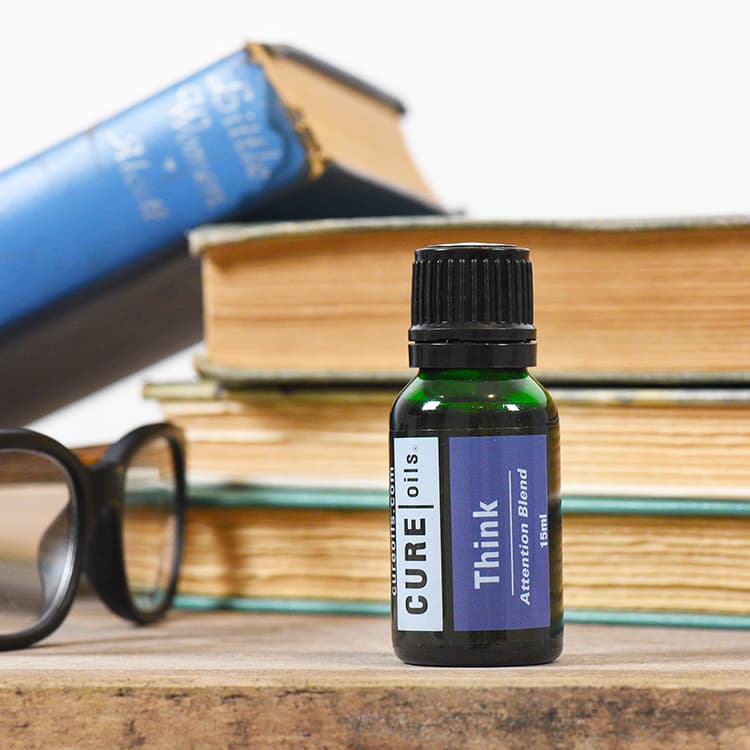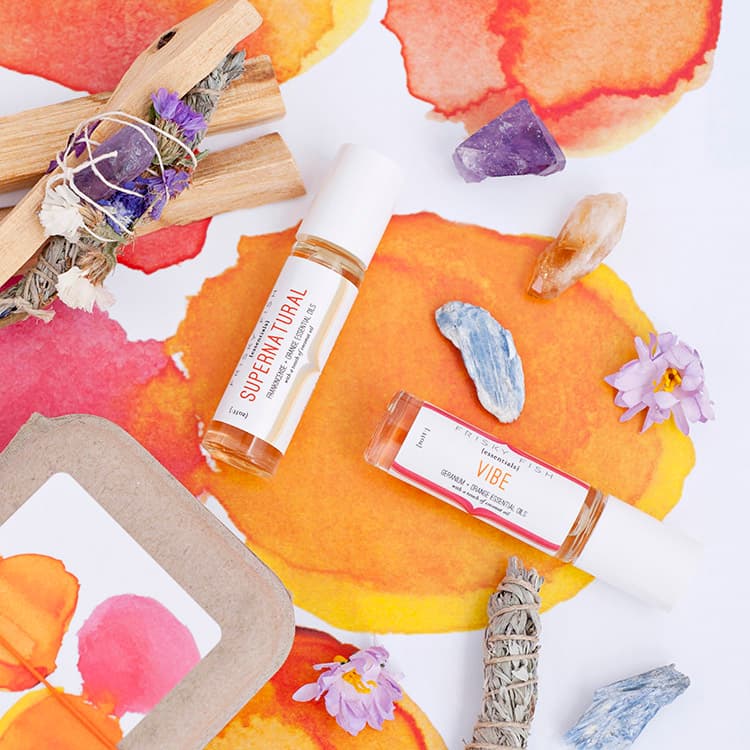How to Label Your Essential Oil Bottles Like a Pro
This entry was posted on November 19, 2024 .
Labeling essential oil bottles may seem like a small task, but it’s an important part of presenting your product to the world. Whether you sell your essential oils online, at craft fairs, or in stores, a professional custom label makes a big difference.
It not only gives your product a polished look but also ensures customers get the information they need to use it safely.


Why Good Labeling Matters for Essential Oils
Even though essential oil bottles are small, the right label can make a big impact. A well-designed, informative label can help you:
- Catch Attention: Your label is the first thing people see. If it looks professional and eye-catching, it can attract customers and make your products stand out.
- Provide Clear Information: Your label is where customers look for key details like the type of oil, ingredients, and instructions. Clear labels help people feel confident about what they’re buying and how to use it.
- Build Trust: A high-quality label makes your brand look professional. Customers are more likely to trust products with labels that look polished and include all the necessary information.
Creating good labels isn’t just about making your product look nice. It’s also about communicating clearly with your customers and making a strong first impression.
What to Include on Your Essential Oil Labels
When creating labels for essential oils, there are some key pieces of information that should always be included. A well-designed label needs to balance design with function, ensuring that all the important details are easy to find and read.
Here’s what you should include on your essential oil labels:
- Product Name and Oil Type: This should be the most prominent part of the label. It tells people what type of essential oil is inside, like lavender, peppermint, or eucalyptus.
- Amount of Oil in the Bottle: List the volume of oil in milliliters (ml) or fluid ounces (fl. oz.) so customers know how much product they’re getting.
- Ingredients: If your product contains more than just the essential oil, such as carrier oils, you should list these ingredients as well.
- Usage Instructions: Let customers know how to use the oil. If it requires dilution before use, be sure to mention that clearly.
- Warnings: Some essential oils can cause skin irritation or allergic reactions. Including a warning label for any risks helps customers use the product safely.
- Contact Information: Include your brand name and contact information. This could be a website, phone number, or email address so customers know where to find more of your products.
Each of these elements ensures your label is informative and compliant with basic product labeling standards.
Choosing Durable Materials for Essential Oil Labels
Since essential oil bottles are handled often, it’s important to use durable materials for your labels. Essential oils can be messy, and your labels might be exposed to spills or moisture, so the material you choose should be able to hold up to these conditions.
One popular option is BOPP (Biaxially Oriented Polypropylene), which is a strong, waterproof material. It’s available in different styles, including white, clear, and chrome. BOPP is resistant to oil and water, making it perfect for essential oil bottles.
Whether your product is used at home, in a spa, or at a wellness studio, these labels will stay looking fresh and clean.
If your brand is focused on eco-friendliness, you might want to consider using Kraft paper or BioStone labels. These materials are more sustainable options, and they still offer durability for your essential oil bottles.
They give your product a natural, earthy look, which works especially well for organic or handmade essential oils.
For added protection, consider applying a laminate or varnish to your labels. These coatings help prevent smudging, fading, or peeling, even if your bottle is frequently touched or exposed to oil.
Design Tips for Small Bottles
Essential oil bottles are typically small, which means you don’t have a lot of space to work with when designing your label. Here’s how you can maximize the space while still making your label attractive and readable.
- Keep it Simple: Since the space is limited, focus on the most important details, such as the oil type and any warnings. Don’t overcrowd the label with unnecessary information.
- Readable Fonts: Choose a font that is easy to read, even at a smaller size. Avoid fancy fonts that are difficult to make out when reduced to fit on a small bottle.
- Bold Colors: To make your product stand out, use bold colors or contrasting text to ensure the information is easy to see. A pop of color can also catch a customer’s eye, making your bottle more noticeable on a shelf.
- Use Wraparound Labels: If you need to include more information than the front of the bottle allows, consider using a wraparound label. This type of label gives you more space to include everything without cluttering the design.


When working with small bottles, clarity is key. You want your label to be informative without feeling crowded, so keep the design clean and straightforward.
Staying Compliant with Essential Oil Labeling Rules
It’s important to make sure your essential oil labels follow any legal guidelines, especially if you’re selling the product. In the U.S., essential oils are regulated differently than drugs, but there are still some labeling rules you need to be aware of.
- Health Claims: Be cautious about making any health claims on your label. The FDA has strict guidelines about this. You cannot claim that your essential oils can treat or cure medical conditions unless you have the research to support it.
- Ingredient Transparency: Make sure your label lists all ingredients in your essential oil blend, especially if it includes carrier oils or other additives.
- Safety Warnings: Some essential oils are not safe for children, pets, or pregnant women. Including warnings about proper use is an important part of your label.
Following these guidelines not only helps protect your customers but also keeps your business compliant with the rules and regulations around essential oil sales.
Why Lightning Labels Is the Right Choice for Essential Oil Labels
At Lightning Labels, we specialize in creating custom labels that look great and last long. Whether you’re producing small batches of essential oils or running a large operation, we can help you get the professional labels you need.
We offer a wide range of customization options, so you can create a label that fits your brand. Our labels are designed to be durable, ensuring they stand up to oils, water, and regular handling. Plus, our quick turnaround times mean you can get your labels fast, with no long delays.
When you choose Lightning Labels, you’re getting:
- Customizable Labels: Create labels in any size, shape, or color to fit your essential oil bottles perfectly.
- Durable Materials: Our labels are made to last, with materials like BOPP that resist oil and water.
- Fast Service: We offer 48-72 hour turnaround times after proof approval, so you can get your labels quickly and get your products to market faster.
With Lightning Labels, you can be confident that your essential oil bottles will look professional and last a long time, even with regular use.
Label Your Essential Oils Like a Pro
Labeling your essential oil bottles professionally can help you build your brand, attract customers, and ensure your product is used safely. By using high-quality materials and following simple design tips, you can create labels that are both beautiful and durable.
Ready to start labeling your essential oil bottles? Get in touch with Lightning Labels today to create custom labels that will make your essential oil products shine!
FAQ: Labeling Essential Oil Bottles
What should be included on an essential oil label?
Your essential oil label should include the product name, the amount of oil, ingredients, usage instructions, safety warnings, and your contact information.
What is the best material for essential oil labels?
BOPP labels are a popular choice because they are waterproof and oil-resistant. If you're looking for eco-friendly options, Kraft paper or BioStone labels are also great choices.
How do I design labels for small essential oil bottles?
Keep the design simple, use readable fonts, and focus on key information. Wraparound labels can help you include more details without cluttering the front of the bottle.
Are there regulations for labeling essential oils?
Yes, be cautious with health claims, list all ingredients, and include any necessary safety warnings to comply with FDA guidelines.
How fast can I get my essential oil labels from Lightning Labels?
We offer fast 48-72 hour turnaround times after proof approval, so you can get your labels quickly and start selling your products sooner.

 Custom Labels
Custom Labels  Custom Beverage Labels
Custom Beverage Labels  Custom Lip Balm Labels
Custom Lip Balm Labels  Custom Warning & Safety Labels
Custom Warning & Safety Labels  Perfume Bottle Labels
Perfume Bottle Labels  Bumper Stickers
Bumper Stickers  Custom Prop 65 Warning Labels
Custom Prop 65 Warning Labels  Custom Stickers
Custom Stickers